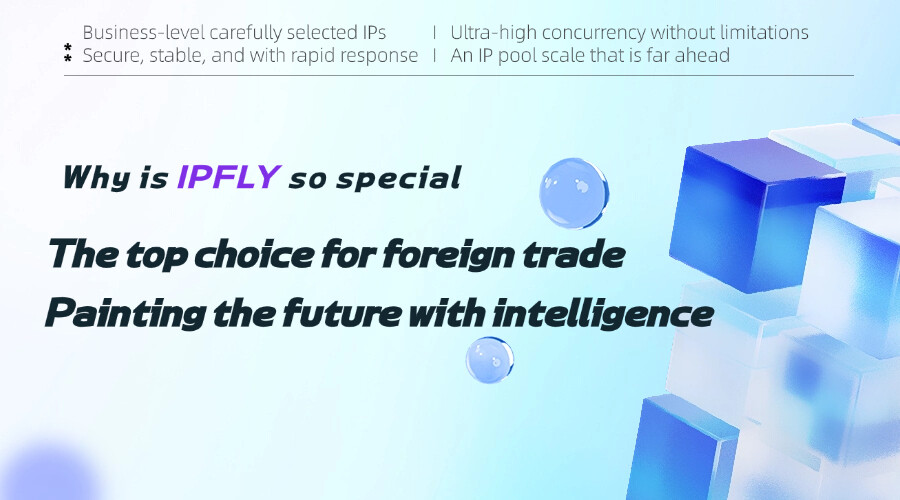For Amazon cross-border e-commerce sellers, Proxy IP is not only a basic tool, but also the key to protect account security and improve operational efficiency. However, many sellers still have misunderstandings about the use of proxy IP, technology principles and operational details.
I will start from the practical application, combined with the platform rules and industry cases, for you to systematically analyze the reasonable use of proxy IP strategy.
Proxy IP Definition and Classification
Proxy IP is a technology that relays network requests through third-party servers, hiding the user’s real IP address and analogizing network access from a specific geographic location. Proxy IP can be categorized into the following three types based on its origin and usage:
| Type | source | Features | Applicable Scenarios |
| Data Center Proxy IP | Server Room | Fast and low cost | Data Crawling, Ad Verification |
| Residential Proxy IP | Home Broadband Network | High authenticity and seal-proof | Multi-account management, localized operation |
| Dynamic Proxy IP | Cellular Network | Highly Dynamic and Concealed | Mobile authentication, short-term high-frequency operation |
Example: A seller operates 5 stores on Amazon US, if they use the same IP to log in directly, the platform may determine that the accounts are related and blocked. In this case, assigning independent IPs to each store through residential proxy IPs can effectively avoid the risk.
Why do I need a proxy IP for Amazon operations?
Avoiding the risk of account affiliation
Amazon detects account associations through IP addresses, device fingerprints, browser cookies, and other data. If multiple stores use the same IP address to log in, the traffic will be limited, or the account will be permanently blocked.
- Case: A home furnishing seller was judged by Amazon as “operating under the same entity” because it shared IPs to manage 3 stores, resulting in the freezing of funds for all stores and a loss of more than $100,000 USD.
Support localized operation
Proxy IP can help sellers by analogizing the geographic location of the target market:
- Get accurate local search rankings and advertising data;
- Test the localization of the product detail page;
- Manage overseas warehouse inventory with quick access to local logistics systems.
For example, a German website seller logged into the backend through a Berlin residential proxy IP and found that the number of keyword searches was 30% higher than when using a Chinese IP, and after optimizing the listing accordingly, the conversion rate increased by 22%.
Efficient Enforcement Market Research
Proxy IP combined with automation tools such as crawlers:
- Monitor competitor pricing and promotional strategies;
- Collects product review data in bulk;
- Analyze category traffic fluctuation patterns.

A Practical Guide to Proxy IP in Amazon Operations
Account Registration Stage
- IP Selection: Prioritize the use of residential proxy IPs to avoid being recognized as server room IPs.
- Environment isolation: Each store needs to be bound to a separate IP, and with a clean browser environment (no residual cookies).
- Verification method: Make sure your IP has not been tagged by Amazon by using the IP checker tool before registration.
Daily Operation Stage
- Advertisement Placement: Use proxy IP to log in the advertisement backend, which can avoid the delay of advertisement audit due to frequent IP switching.
- Customer service communication: If the group is located in China, contacting the buyers through the IP of the agent in the target country can enhance the trust and response rate.
- Inventory Management: Local IP access to FBA warehouse system reduces order processing errors caused by network delays.
Risk Control and Avoidance Strategies
- IP rotation rule: The same IP will not log in more than 3 times per day to avoid triggering the monitoring of the platform.
- Protocol Options: Prefer to use SOCKS5 or HTTPS protocol proxies for encrypted data transfer.
- Anomaly monitoring: If the “Account Verification” prompt appears, immediately pause the operation and change the IP.
Common Misconceptions in Proxy IP Usage
Misconception 1: Proxy IP = completely safe
Even if you use a proxy IP, your device may still be linked if your fingerprints (e.g. browser font, time zone) are not isolated. You need to use it with an anti-connection browser.
Misunderstanding 2: Low-cost proxy IP can meet the demand
Some cheap proxy IPs have the problem of “multi-sharing”, which may lead to contamination of the IP.
How to choose a proxy IP for Amazon?
IP Purity: Ensure that the proxy IP is not blacklisted by Amazon.
Geographic coverage: If you are running a multinational website, you need to support IP allocation in mainstream markets such as the United States, Europe and Japan.
Protocol and bandwidth: Support HTTP(S)/SOCKS5 protocol and bandwidth to meet the demand for concurrent processing (e.g., concurrent processing of advertisements and orders).
Technical Service Response: Provide 24-hour troubleshooting to avoid operation interruption due to IP failure.
For example, IPFLY’s Residential Proxy IP service supports exclusive IP allocation, providing Amazon sellers with a stable localized network environment.
The application of proxy IP in Amazon cross-border e-commerce goes far beyond the basic function of “anti-blocking”. From market research to advertisement optimization, from local language operation to risk control, the reasonable use of proxy IP can significantly improve store compliance and operational efficiency. For sellers who have been planning for the cross-border track for a long time, choosing a reliable proxy IP service provider (e.g. IPFLY) and mastering the scientific operation method will be the key to break through the platform’s limitations and win the competition in the market.


